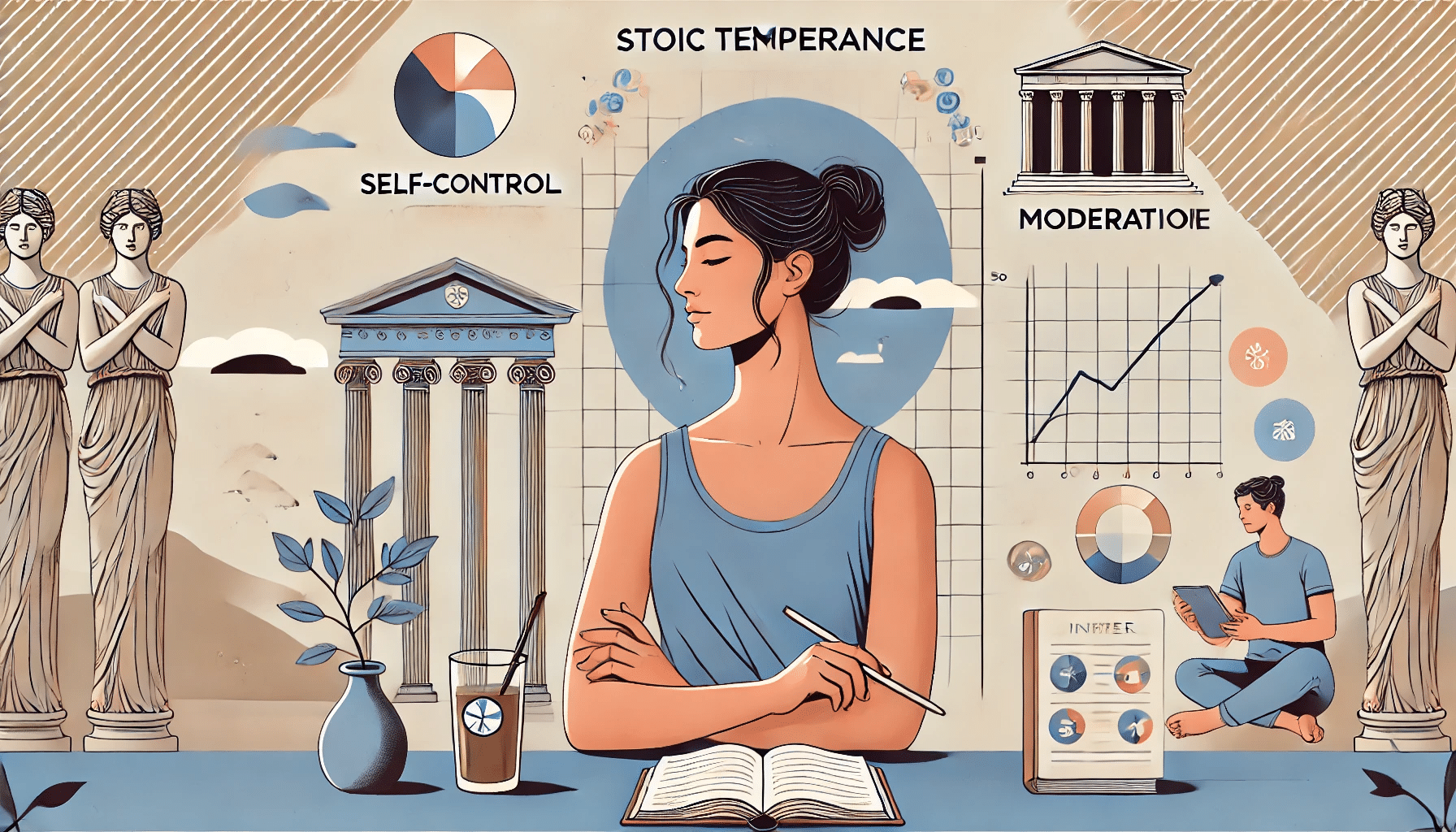Temperance is one of the four cardinal virtues in Stoicism, and it’s all about self-control, moderation, and balance. The ancient Stoics like Seneca, Epictetus, and Marcus Aurelius believed that temperance was essential for living a balanced and harmonious life. So, how can you channel your inner Stoic and cultivate temperance in today’s world? Let’s explore!
What is Stoic Temperance?
“Temperance is a mean with regard to pleasures.” – Aristotle
Stoic temperance involves exercising self-control and moderation in all aspects of life. It’s about avoiding excess and finding balance, ensuring that our desires and actions align with reason and virtue.
1. Practice Self-Control
“No man is free who is not master of himself.” – Epictetus
One of the first steps to embracing Stoic temperance is practicing self-control. This means managing your impulses, desires, and emotions to act in alignment with your values and principles.
Practice:
- Mindful Eating: Pay attention to what and how much you eat. Practice moderation and avoid overindulgence.
- Limit Distractions: Reduce time spent on activities that distract you from your goals, such as excessive screen time or social media use.
- Set Boundaries: Establish clear boundaries to manage your time and energy effectively.
2. Embrace Moderation
“We should always be asking ourselves: ‘Is this something that is, or is not, in my control?’” – Epictetus
Moderation is about finding the right balance in all aspects of life. It’s not about abstaining entirely but about enjoying things in a balanced and controlled manner.
Practice:
- Balanced Lifestyle: Create a balanced routine that includes work, leisure, and self-care activities.
- Moderate Consumption: Enjoy your favorite foods, drinks, and activities in moderation. Avoid excess and indulgence.
- Sustainable Habits: Adopt habits that are sustainable and promote long-term well-being.
3. Cultivate Patience
“Patience is bitter, but its fruit is sweet.” – Aristotle
Patience is a crucial aspect of temperance. It involves waiting calmly and enduring hardships without frustration or anxiety.
Practice:
- Delayed Gratification: Practice delaying gratification by setting long-term goals and working towards them steadily.
- Mindful Breathing: Use deep breathing techniques to stay calm and patient in stressful situations.
- Reflective Journaling: Write about your experiences with patience and reflect on how it benefits your life.
4. Develop Emotional Resilience
“He who is brave is free.” – Seneca
Emotional resilience is about maintaining inner balance and composure, especially in difficult times. It involves managing your emotions effectively and responding to challenges with a clear mind.
Practice:
- Emotional Awareness: Pay attention to your emotions and understand their triggers. Practice self-awareness to manage them better.
- Stress Management: Use stress management techniques like meditation, exercise, and relaxation to maintain emotional balance.
- Positive Affirmations: Use positive affirmations to reinforce a resilient and balanced mindset.
5. Foster Inner Harmony
“Harmony is the soul’s greatest good.” – Seneca
Inner harmony is the ultimate goal of temperance. It involves aligning your thoughts, actions, and desires with your true self and living in accordance with your values.
Practice:
- Self-Reflection: Spend time reflecting on your values, goals, and actions. Ensure they are in harmony with each other.
- Gratitude Practice: Cultivate a sense of gratitude for what you have and the progress you’ve made.
- Mindfulness Meditation: Practice mindfulness meditation to connect with your inner self and foster a sense of peace and balance.
Conclusion
Living with temperance is about more than just self-control; it’s about finding balance and harmony in all aspects of life. By integrating the Stoic virtue of temperance into your daily routine, you can achieve a sense of inner peace and resilience. Remember, temperance isn’t about deprivation—it’s about enjoying life in a balanced and meaningful way. Unleash your inner Stoic and live a life of moderation, self-control, and inner harmony.

